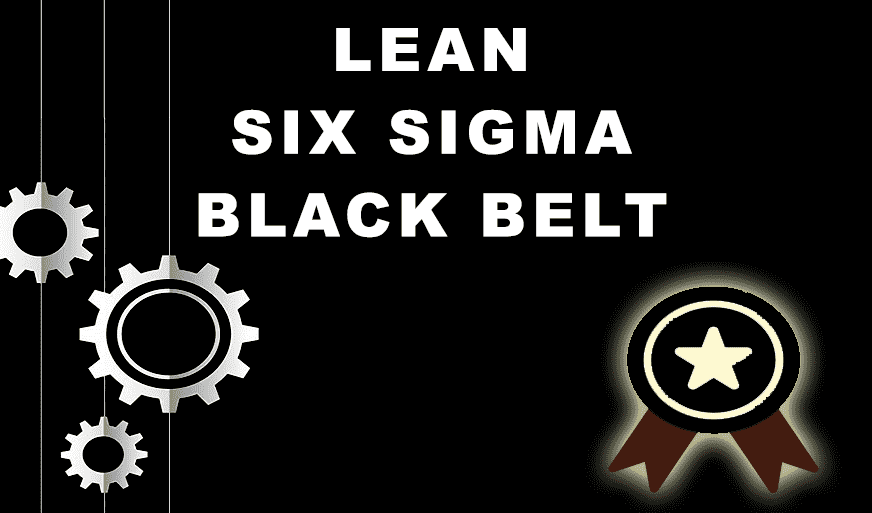Lean methodology, Six Sigma methodology and Lean Six Sigma Explained
-
 By Akanksha Harjai
By Akanksha Harjai - Published on Jul 20 2023

Table of Contents
- Introduction to the Concept of Lean, Six Sigma, and Lean Six Sigma Methodologies
- What is Lean? What are the Benefits of Lean Methodology?
- 7 Wastes of Lean Methodology
- What is Six Sigma?
- Six Sigma DMAIC process
- Difference between Lean and Six Sigma
- Introduction to Lean Six Sigma
- What are the benefits of using the lean six sigma methodology?
- Lean and Six Sigma in Quality Management – Why is it Important?
Introduction to the Concept of Lean, Six Sigma, and Lean Six Sigma Methodologies
When a person starts to think about the fundamental principles of streamlining a business operation, they tend to discover what the process is all about through different mediums. However, being here you are at the right stop, as we will introduce you to the methodologies in Lean and Six Sigma
Related read: Six Sigma Certifications - Reasons Why you Should Get Them
People with no experience in this field can also get an idea of what these methodologies are all by reading this article.
What is Lean? What are the Benefits of Lean Methodology?
-
Lean represents a systematic approach to reducing or removing work that does not include value to the process or method.
This methodology stresses the elimination of unnecessary steps in a process and the only steps to add value.
The Lean approach ensures outstanding quality and satisfaction for the customers. It also promotes a continuous chain of improvements as it is a never-ending process of chunking out waste. The lean methodology helps in various business activities and offers benefits such as -

- Process cycle time reduction
- Product or service delivery time improvement.
- Gradual reduction or possible elimination of defect generation chances
- Inventory level reduction
- Optimization of primary resources that lead to specific improvements among others.
7 Wastes of Lean Methodology
-
-
In Lean, the 7 wastes are popularly known as the origin of all unprofitable behavior within an organization.
In Lean philosophy, the best way to properly explain waste is as "Stuff that doesn't add value."
Consumers would not be able to pay for any activity that does not add value to what they essentially want.

1) Defects
Defects are the most common of the seven wastes. Defects are not always the easier ones to be detected before they typically reach potential customers.
Any mistakes made during production, or with the products themselves, come at a significant cost.
2) Overproduction
Overproduction leads to high inventory levels which can obscure many of your organization's complex problems.
Batch processing, creating more supply than demand, etc. are two of the more destructive forms that overproduction can take in lean methodology.
3) Transportation
The movement of products from one place to another is associated with transportation.
It is regarded as an apparent waste, as it adds zero value to the product.
4) Waiting
During our daily lives, we continue to waste enormous quantities of time waiting for possible things.
Time wasted waiting on an engineer or team member, is a particularly uncertain and pervasive form of waste, often through more bureaucratic processes, which can take a long time to remedy or minimize.
5) Inventory
Inventory always costs money, as every single piece of product is tied up in raw material.
The work in progress or finished goods in addition maintains a cost and until it is sold, that cost is of the business.
6) Motion
The excess of 'action' is best described as some sort of needless movement-a of computer requiring more energy than required to run, workstations being far apart needing movement between, etc.
7) Processing
In lean, small is always better. The use of small suitable machines where they are required inflow is much more advantageous than large machinery which can stop a robust process for days to come.
-
What is Six Sigma?
-
Six Sigma is a collection of methods and approaches to process management.
With companies around the world, 6 Sigma has become a global phenomenon.
Businesses use the six sigma methodologies to improve overall operational efficiencies, whereas individuals use It for their career enhancement.
A Six Sigma qualification represents an ideal way to develop the skills of a leader of the organization.
It helps restore business processes and emphasizes full productivity in all service features, and focuses more on reducing process errors.
Popular Six Sigma Certifications:
Six Sigma Green Belt Certification
Six Sigma Yellow Belt Certification
Six Sigma DMAIC process
-
DMAIC is the process improvement method of Six Sigma used for improving existing processes problems with unknown causes.

DMAIC is an acronym majorly used to Define, Measure, Analyze, Improve, and Control. An integral part of an organization’s 6 Sigma Quality Initiative is the DMAIC, and you can do it in a short period of time.
Related read: How long does it take to get six sigma?
Difference between Lean and Six Sigma
-
Although often conflated, Lean Six Sigma is a more dominant methodology, Lean maintains several key differences as compared to the methodology of Six Sigma.
The six Sigma method and Lean have the same target. All are working to minimize waste and to build the most effective program possible.
However, both Lean and Six Sigma employ alternative approaches to achieve their goal.
The only difference between Lean methodology and Six Sigma is the identification of the major cause of waste, differently.
Lean practitioners claim waste comes from unnecessary steps in the manufacturing cycle that do not add value to the product, whereas advocates of Six Sigma argue that waste stems from process variability.
Introduction to Lean Six Sigma
-
As stated by the American Society for Quality (ASQ), lean Six Sigma is a management theory centered on empirical evidence and centered on results, which emphasizes the avoidance of defects and over-identification of defects.
Lean Six Sigma works toward driving customer satisfaction and emphasizes the results by reducing waste, variation, and cycle time.
Six Sigma promotes the use of work standardization and flows, thus creating a competitive advantage.
The Lean Six Sigma technique applies anywhere where waste and variation exist and states that every employee must be involved.
It is the combination of two common quality Improvement methods, which are Lean and Six Sigma. This combination paves the way for service excellence.
These time-tested methods of lean six sigma provide businesses with a straightforward path to accomplish their operational tasks as effectively and efficiently as possible.
It blends the Lean and Six Sigma methods to offer the best process results.
In this, Lean principles help in reducing or removing waste from operations and Six Sigma methodology concentrates on variation-process reduction.
Thus, lean six sigma principles help to improve process efficiency and quality.
Popular Lean six sigma certifications:
What are the benefits of using the lean six sigma methodology?
-
Businesses go through rising costs and unusual challenges every day. It provides a competitive advantage in the following ways:
- Streamlining processes using results in improved customer experience and increased loyalty
- Developing more efficient process flows to drive more extraordinary bottom-line results
- Switching from defect detection to defect prevention reduces costs and removes waste
- Standardizing processes leads to organizational “nimbleness” and the ability to pivot to everyday challenges
- Decreasing lead times increase capacity and consistent profitability
- Typically engaging longtime employees in the effort improves morale and accelerates people's development.Suggested read: Lean Six Sigma on Resume – Top Career Benefits
Lean and Six Sigma in Quality Management – Why is it Important?
-
We live in a very dynamic environment today. In this complex climate, lean or six sigma approaches cannot bring about the maximum potential for necessary change if implemented in isolation.
Hence, when used in combination, Lean & Six Sigma integration provides for exceptional improvements. Traditionally the lean technique is used in this management strategy first to dispose of the waste in a process.
Later, the Six Sigma tools are typically used to improve variations in processes.
However, in today's time, these two approaches go hand in hand. The aim of using this is to enhance procedures by reducing variability and disposing of waste.
It is a cycle of continuous improvement, in which Lean methods and Six Sigma strategies both are involved during PDCA.
The extent of this methodology's approaches can vary depending on the complexities of the process or the improvement that is being sought.
Combining these two methods assists in the development of streamlined processes with outstanding quality & results. Overall, this methodology improves profits on the bottom line and helps to meet business goals.
To know more about Six Sigma-related courses, visit Sprintzeal.
Suggested Course – Six Sigma Black Belt Certification
Subscribe to our Newsletters
Popular Programs
Trending Posts
Operation Manager Interview Questions and Answers
Last updated on Mar 13 2023
Top 10 Lean Manufacturing Tools for Optimal Productivity
Last updated on Jan 15 2024
Top Career benefits of Lean Six Sigma Green Belt
Last updated on Apr 3 2024
Introduction to Lean Manufacturing- Definitions, Framework, and More
Last updated on Nov 15 2023
Best Quality Management Tools
Last updated on Oct 8 2024
Quality Assurance vs Quality Control
Last updated on Aug 2 2023
Categories
- Agile Management 54
- AI and Machine Learning 42
- Big Data 53
- Business Management 51
- Cloud Computing 44
- Digital Marketing 56
- Information Security 8
- IT Hardware and Networking 17
- IT Security 103
- IT Service Management 29
- Leadership and Management 1
- Microsoft Program 2
- Other 43
- Programming Language 31
- Project Management 162
- Quality Management 75
- Risk Management 8
- Workplace Skill Building 2
Trending Now
Top Career benefits of Lean Six Sigma Green Belt
ArticleSix Sigma Black Belt Certification – Value and Career Benefits in 2024
ArticlePareto Chart in Six Sigma - Explained
ArticleQuality Management Interview Questions 2024
ArticleSix Sigma Certification Guide - A Professional's Guide
ArticleSix Sigma Yellow Belt Certification - Six Sigma for Beginners
ArticleQuality Control Explained – Six Sigma
ArticleTotal Quality Management - A Complete Guide for Beginners
ArticleQuality Assurance in Six Sigma Explained
ArticleQuality Assurance vs Quality Control
ArticleSix Sigma Certification – Everything you Need to Know About Getting Certified
ArticleLean Six Sigma on Resume for Rewarding Career Benefits
ArticleQuality Manager Interview Questions and Answers for 2025
ebookService Delivery Manager Interview Questions and Answers (With Examples)
ArticleSix Sigma Interview Questions and Answers 2024
ArticleHow to become a Quality Analyst
ArticleA Supply Chain Management Guide to Mastering Logistics End to End
ArticleSenior Quality Manager Interview Questions and Answers 2024
ArticleTop 30 Quality Analyst Interview Questions and Answers 2025
ArticleFinancial Analyst Interview Questions and Answers 2024
ArticleRisk Manager Interview Questions and Answers 2024
ArticleCompliance Manager Interview Questions and Answers 2024
ArticleOperation Manager Interview Questions and Answers
Article5 Lean Continuous Improvement Principles to Supercharge Your Operations
ArticleHow to Become a Quality Manager - Career, Job Scope and Certifications
ArticleEssential Components of a Quality Management System
ArticleSix Sigma Certifications - Reasons Why you Should Get Them
ArticleTop Qualities of a Good Manager and a Leader
ArticleLearn about Statistical Process Control (SPC) and its top applications
ArticleCost of Poor Quality - A Detailed Guide
ArticleImplementing 5S Methodology for Better Work Efficiency
ArticleWhat Is Lean Management?
ArticleBest Six Sigma Books in 2024
ArticleLeadership vs Management - The Ultimate Guide
ArticleQuality Assurance Plan - Six Steps To Quality Assurance Plan
ArticleOperational Planning Creation, Key Elements and its Benefits
ArticleA Complete Guide to Product Life Cycle Stages 2025
ArticleSix Sigma tools for DMAIC Phases
ArticleWhat Is Lean Manufacturing?- An Overview
ArticleThe Lean Continuous Improvement Model: A Comprehensive Guide
ArticleDMAIC vs. DMADV: Key Differences and Choosing the Right Six Sigma Methodology
ArticleA Deep Dive into the Power of Lean Continuous Improvement Process
ArticleLean Continuous Improvement Methods for Business Excellence
ArticleIntroduction to Lean Manufacturing- Definitions, Framework, and More
ArticleUnderstanding the Key Principles of Lean Manufacturing
ArticleSecret to Unlock Organizational Excellence: Stages of Continuous Improvement
ArticleLean Continuous Improvement: A Detailed Guide to Mastering Organizational Quality
ArticleLean Waste Management: The Ultimate Guide 2023
ArticleA Deep Dive into Lean Continuous Improvement Tools
Article8 Wastes of Lean - Strategies for Identification and Elimination
ArticleThe Ultimate Guide to Lean Manufacturing
ArticleUnderstanding Lean Manufacturing's Pros and Cons
ArticleLean Waste Reduction Strategies: Boost Efficiency and Cut Costs
ArticleTop 10 Lean Manufacturing Tools for Optimal Productivity
ArticleBeyond the Basics: Benefits of Lean Continuous Improvement
ArticleWhat are Quality Standards? | A Guide to ISO Standards
Article7 Important Types of Quality Management System
ArticleA Comprehensive Guide to Quality Management Systems
ArticleISO 9001 Standard: Benefits and Certification
ArticleBenefits of QMS Certification for Your Business
ArticleStep-by-Step Implementation Guide to ISO 9001
ArticleThe Ultimate Guide to ISO 9001: Boosting Quality and Certification Success
ArticleQuality Management System – QSM Approaches and Methodologies
ArticleHow to Effectively Implement a Robust Quality Management System?
ArticleExplaining QMS Documentation Structure: Benefits and Best Practices
ArticleWho Needs ISO 9001 Certification and Why?
ArticleKey Elements of ISO 9001:2015 Quality Management System
ArticleOvercoming Common Challenges in ISO 9001 Certification: Tips and Best Practices
ArticleBest Quality Management Tools
ArticleTotal Quality Management (TQM) vs. Six Sigma
ArticleQuality Manager Salary: What Freshers & Experts Earn in 2025
ArticleCertified Scrum Product Owner: Job Roles And Responsibilities
ArticleTips for Continuous Integration Testing: Streamlining QA
Article10 Quality Management Strategies Adopted by Top Managers
Article



















